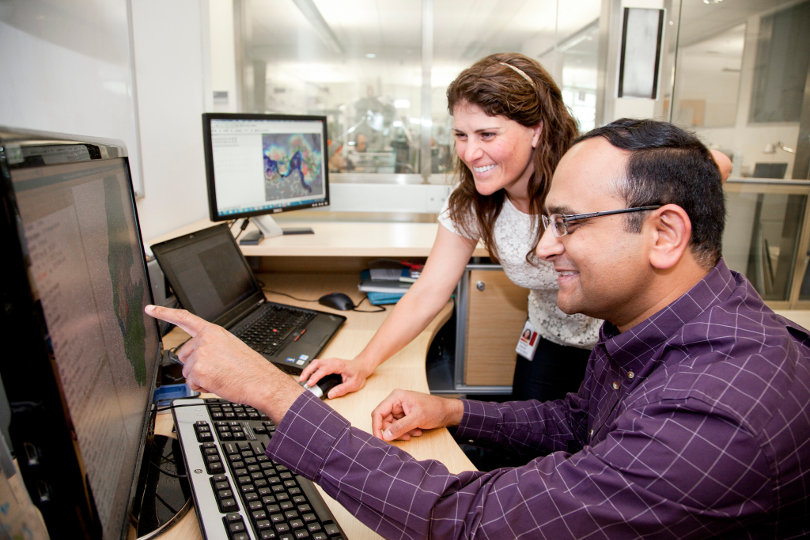
Robert Donaldson, the renowned change expert is the author of the hot-selling book ‘Collaborative Power Grab.’ The acclaimed speaker has a diversified industry career that spans over 40 years and establishes him as a thought leader. His organizational philosophy involves building teams and promoting collaboration within the workspace to achieve individual and organizational goals.

Robert is a strong believer in collaboration and has been giving away his knowledge almost freely. Over the years, he has hosted numerous employee empowerment and leadership training sessions at several professional venues. Now, he is helping organizations build a collaborative culture to reach their full growth potential.
Recently, we got up close and personal with Robert to pick his brain about collaborative culture.
What is a Collaborative Culture and What Collaboration Means in Workplaces?
Robert Donaldson: Highly collaborative workplaces become that way because they are intentionally designed to create a workplace of shared values. The shared values are then promoted by leader-managers who equally prioritize collaboration skills right along with the technical skill sets. The shared values are then promulgated by turning everyone into an expert, reducing fear by advancing inclusion, sharing control with those that have proven themselves to handle the responsibilities and enhancing transparency to promote a common good. This takes a lot less work than you think it does.
The key here is that all human brains use the same basic operating structure and when you create an environment of shared values the long-embedded tendency for humans to collaborate with each other will show up in the intentionally designed workplace of shared values.
Collaboration in the workplace means a predictable and consistent culture, highly effective interpersonal relationships are a clear expectation supported by training, exceptional problem-solving training, excellent innovation that promotes productivity and a highly supportive work environment that regularly and accurately recognizes good performance.
In the collaborative work culture lousy leaders can’t survive very long and at the same time the right people surface their way into leadership. Everybody in the group is important with the vast mainstream of the workplace population now energized to contribute to Mission success.
How Would You Describe a Healthy Collaborative Culture?
Robert Donaldson: A healthy collaborative culture is where employees work towards their individual growth while also collaborating with their team that allows their expertise to give back to the group. It’s kind of a win-win situation for both workers and the organization. Employees communicate frequently, transfer information freely, and share their ideas for the betterment of the organization.
A healthy collaborative culture is singularly focused on mission success, however only doing so using a reliable, expert-driven, collective approach which maximizes the opportunity for the group to successfully leverage long-term strategies.
Unhealthy cultures, on the other hand, might also focus on mission success but they will instead pursue that objective at the expense of the group culture. The unhealthy culture is completely blind as it supports its long-term goals with the use of defective short sighted strategies that actually undermine the very same goals they’re trying to achieve.
It would be funny if it wasn’t so tragic, with so many group members getting hurt along the way. Also hurt are the stakeholders not getting what they were promised from the organization whether that be customers, shareholders or taxpayers.
![]()
Why is a Collaborative Culture Important? What are its Benefits for an Organization?
Robert Donaldson: Undoubtedly, the biggest benefit of a collaborative culture is creating mission success for the group while simultaneously increasing the job satisfaction for your best talent. Additional benefits include increasing productivity based on the innovation promoted by group members. When you have a collaborative culture, your team works together by using a systematic process to solve problems.
Sharing information, making sure work is prioritized according to the mission (even across internal silos) and developing new ways of doing things that saves time and money providing collective wisdom that proves to be many times more competitive when dealing with the alternative of non-collaborative work cultures.
Over time, each person in the group gets the rightful impression that they are part of something larger than themselves while the leader-managers simultaneously implement the most productive ideas for improvement in order to avoid mission failure.
So instead of following any approach blindly, the leader-managers get to weigh the pros and cons of their business processes. The result: organizational growth climbs meeting all mission related metrics while simultaneously attracting and keeping the best talent.
What are Some Key Elements of Collaboration?
Robert Donaldson: Collaboration comprehensively covers eight different performance categories: Mission, Culture, Effective Interpersonal Relationships, High-quality Communication, Technical Competency, Productivity, Problem-Solving, and Continuous Improvement.
By training leader-managers to use very effective behaviors the followers in the group are more likely to demonstrate interactive communication, shared responsibility, mutual trust, and independent mission center decision making. By giving leader-managers specific behaviors that encourage group members to demonstrate collaboration while simultaneously reducing toxic behaviors in the group, fear generation drops which results in increasing rational, logical and ethical decision making on everyone’s part.
Aside from the moral imperatives of rational, logical and ethical decision making it also just so happens to increase group mission success for leader-managers and job satisfaction for followers all at the same time.
Lastly, if leadership is creating a collaborative priority which distributes power to only the most collaborative current and future leaders and creating experts within the entire general population, leader-managers can now delegate their management tasks downward into the organization leaving more time for leadership responsibilities. With more time to lead, leader managers can protect the culture for the purpose of creating mission success and job satisfaction at the same time.
I know I’m using the comparison of the parallel inter-dependent success activities of mission success and job satisfaction quite a bit, I hope my point is getting across.

How Do You Create a Collaborative Culture in the Workplace?
Robert Donaldson:
1. Create a Collaborative Priority
In collaborative groups the actual act of collaboration sits equally important as each person’s technical skills. In the past (and still today in most groups) good technical skills is the primary method by which the new leader-manager advances up from the worker pool. This is powerfully significant: when you hire a person to be a leader-manager who has the combined skill sets of collaboration along with technical skill sets it makes for an unbeatable combination.
By placing a higher priority on collaboration as a method by which a person advances in the organization it starts to marginalize people who don’t value collaboration. By prioritizing collaborative behaviors, the leader-managers reduce the amount of fear present in the group by advancing inclusion, delegating control and enhancing openness. When the leader-managers do this: group members move away from a flight, fight and freeze workplace mental toolbox and now replace it with a rational, logical and ethical workplace mental toolbox.
By creating a collaborative priority, you attract and keep the best talent, while others who only want to concentrate on their personal agendas, simply leave.
Take away: Given enough time all you’re left with is a bunch of people who just want to collaborate. Imagine that.
2. Create Experts
In a collaborative environment leader-managers want to enhance mission-centered independent decision-making on the part of each member which then results in high levels of Job Satisfaction and massive Mission Centered productivity all at the same time. Training is designed to create an expert level of knowledge for each person’s skill set, whether its technical skills or problem-solving skills or collaboration skills.
Highly collaborative groups believe that the world is essentially undertrained, and they resolve that issue by placing an extraordinary amount of effort into training. When people are trained to expert levels, they make better decisions which reduces the direct supervision burden on the part of the leadership while also allowing group members to be very satisfied effective autonomous decision makers. It feels good to have the autonomy to make decisions and have the skill necessary to make the right decisions.
Empowerment through training to expert levels and then delegating management tasks to newly developed experts allow leaders-managers to manage less and lead more.
Take away: By creating experts, instead of watching the bumper cars colliding at the county fair everybody in the group is now a Formula One race machine: elegant, purposeful and inspired.
3. Lead More Manage Less
Dovetailing off of the advantages of Creating a Collabortive Priority and Creating Experts, leader-managers are able to manage less which then gives them more time to lead.
When you prioritize collaboration and couple that with creating experts in the group the problems that used to show up on your desk stop arriving. In groups that do not have a collaborative ethos we often find that the leader- manager has to increase direct supervision with the team below them in order to ensure the outputs their team is creating, is meeting the requirements of senior management. When you take simple steps to increase the expertise of the group members below the leader-manager and then delegate more management tasks to your new experts, the amount of time spent on direct supervision drops significantly allowing the leader-manager to lead more and manage less.
When leader-managers are too busy managing and they’re not leading it’s a ship without a rudder. As this rudderless ship is bouncing around all your high performers hit the front door and never come back. As your best performers leave, the amount of direct supervision to get Mission centered output from the underperforming team causes direct supervision to climb radically.
That’s bad news for everybody involved.
Take away: I don’t care how satisfied you might feel while you are busy performing your management duties. Your new experts will manage your tasks just fine with the right training and mentoring. So now you can get out there and lead, now.

Conclusion
When leader-managers prioritize collaboration, it allows for people move away from fight, flight and freeze and towards logical, rational and ethical approaches. By marginalizing personal agendas group members start to realize something that’s deeply satisfying for every human: they’re part of something larger than themselves.
When leader-managers empower each group member to expert levels with high levels of training these experts are now more autonomous and are making mission centered independent decisions causing their job satisfaction levels to skyrocket right along with their performance. The combined increase of individual performance then has a dramatically positive impact on mission success.
When leader-managers reduce the massive amount of direct supervision they spend on their management tasks and now lead more, group performance explodes on the scene like never before.
Media Contact
Company Name: Collaborative Strategies Consulting Inc.
Contact Person: Robert M Donaldson
Live Answering Service: 1 (866) 773-4473
Website: Www.collaborativepowergrab.com
LinkedIn: https://www.linkedin.com/in/robert-donaldson-b121b867/







